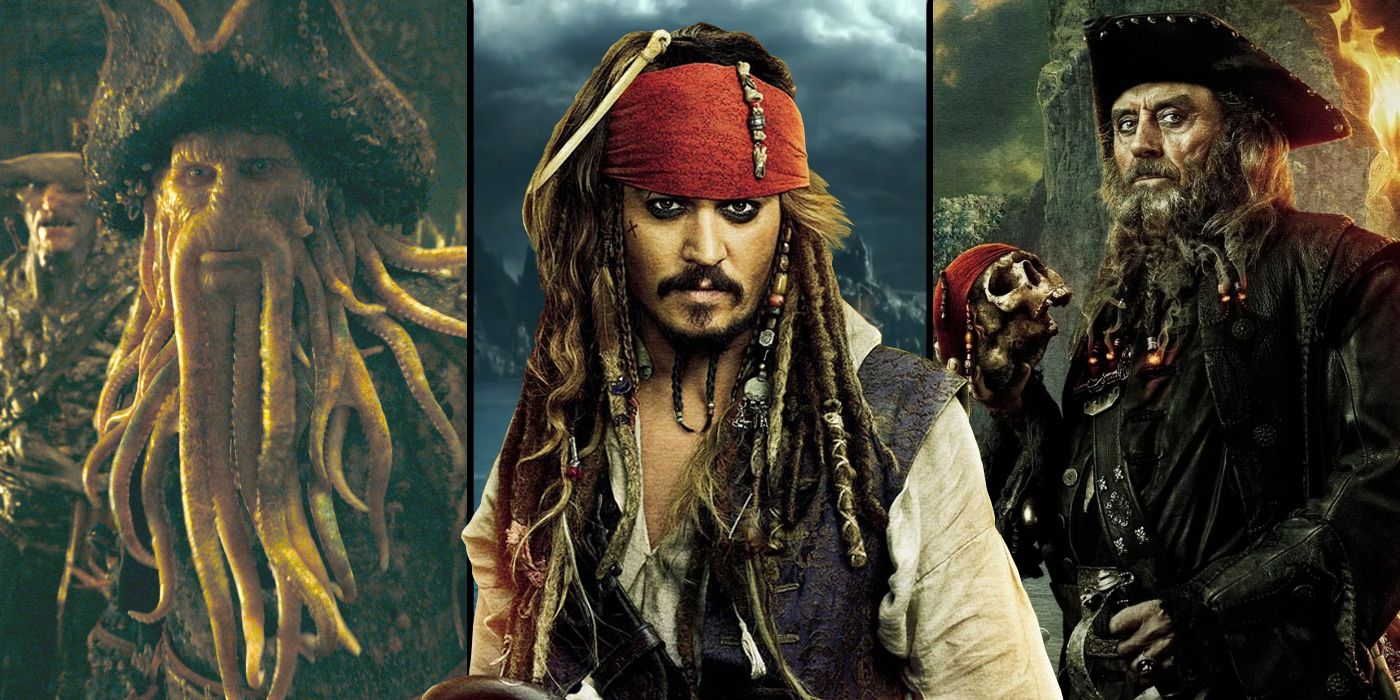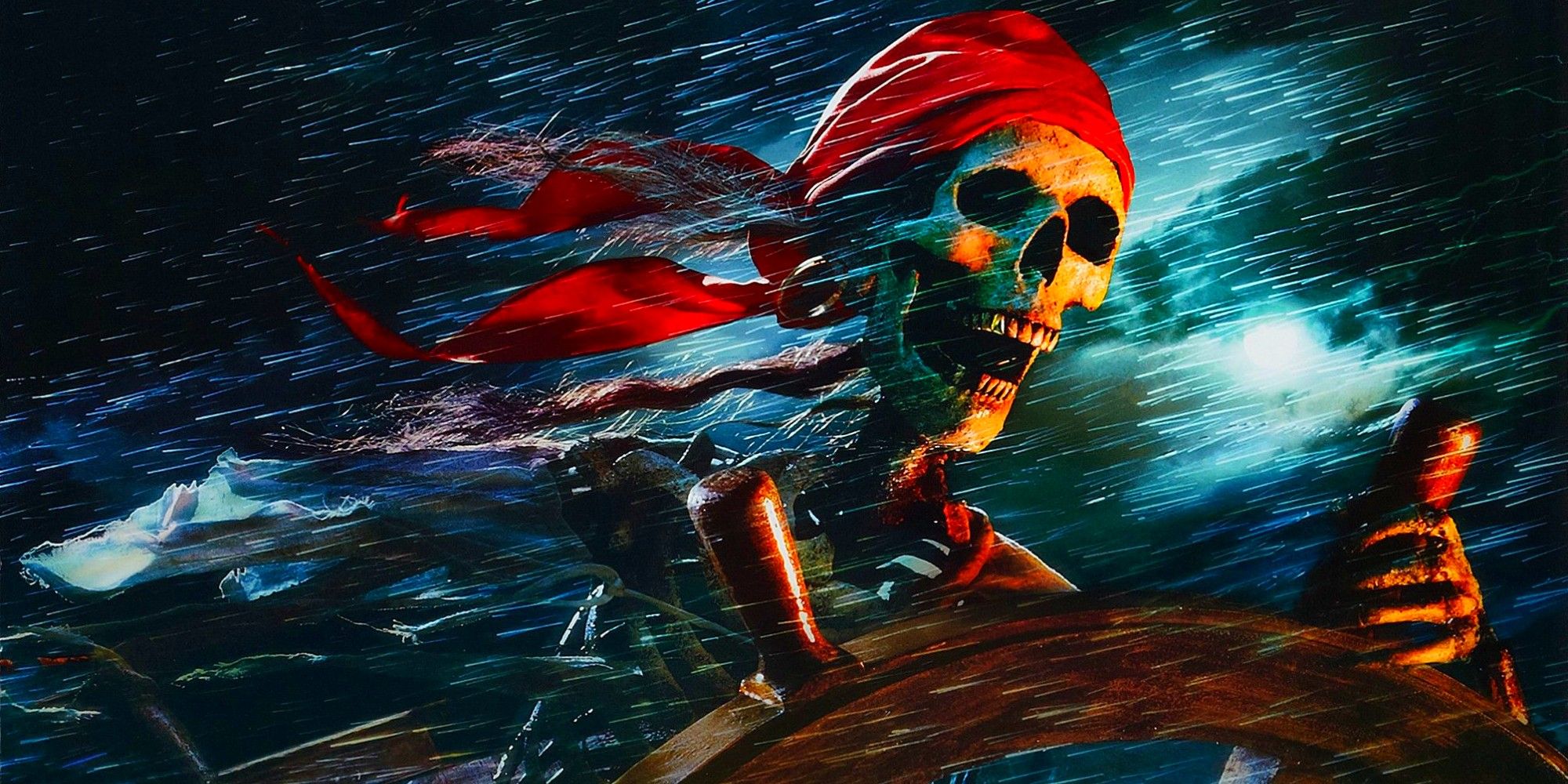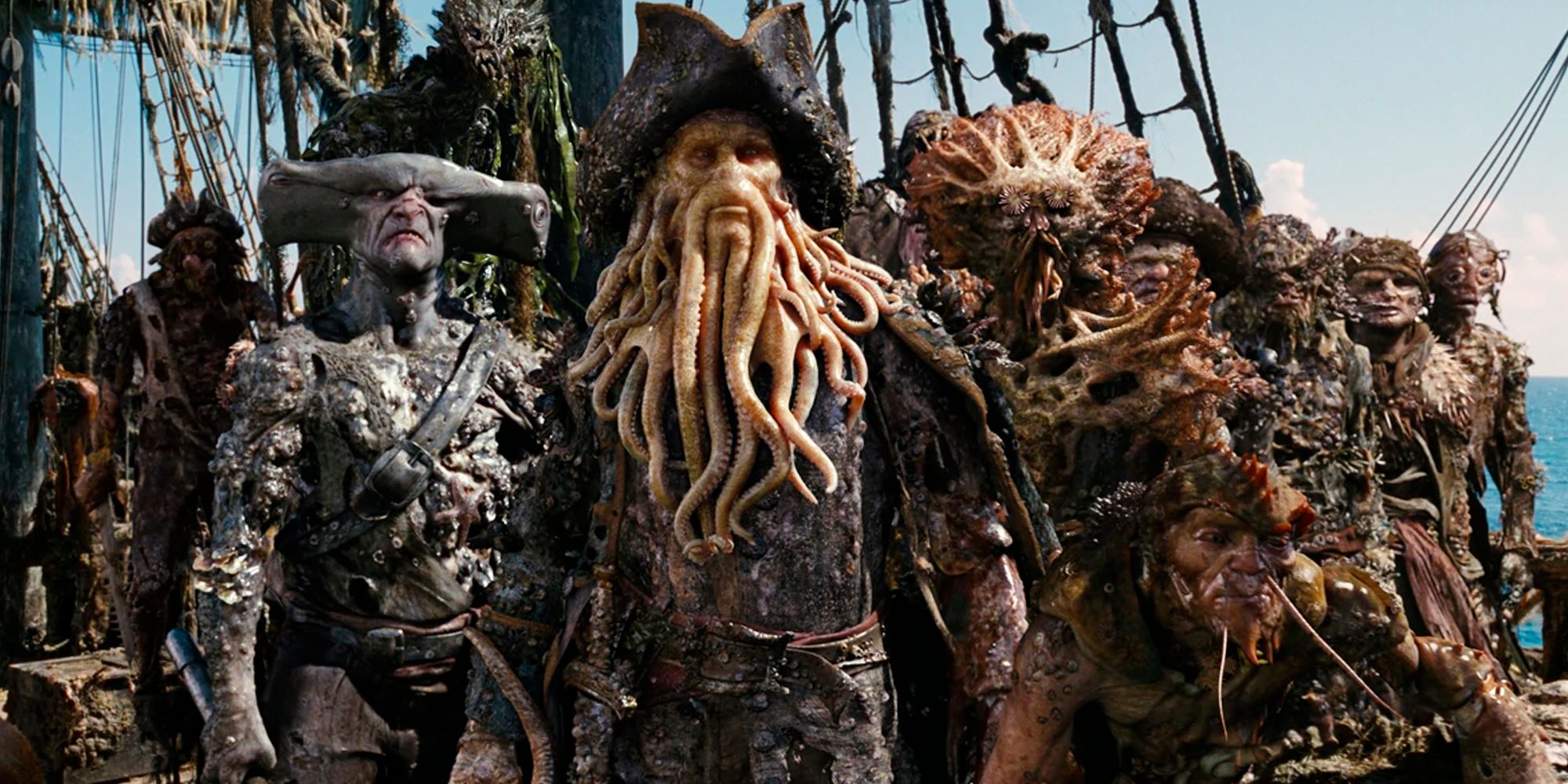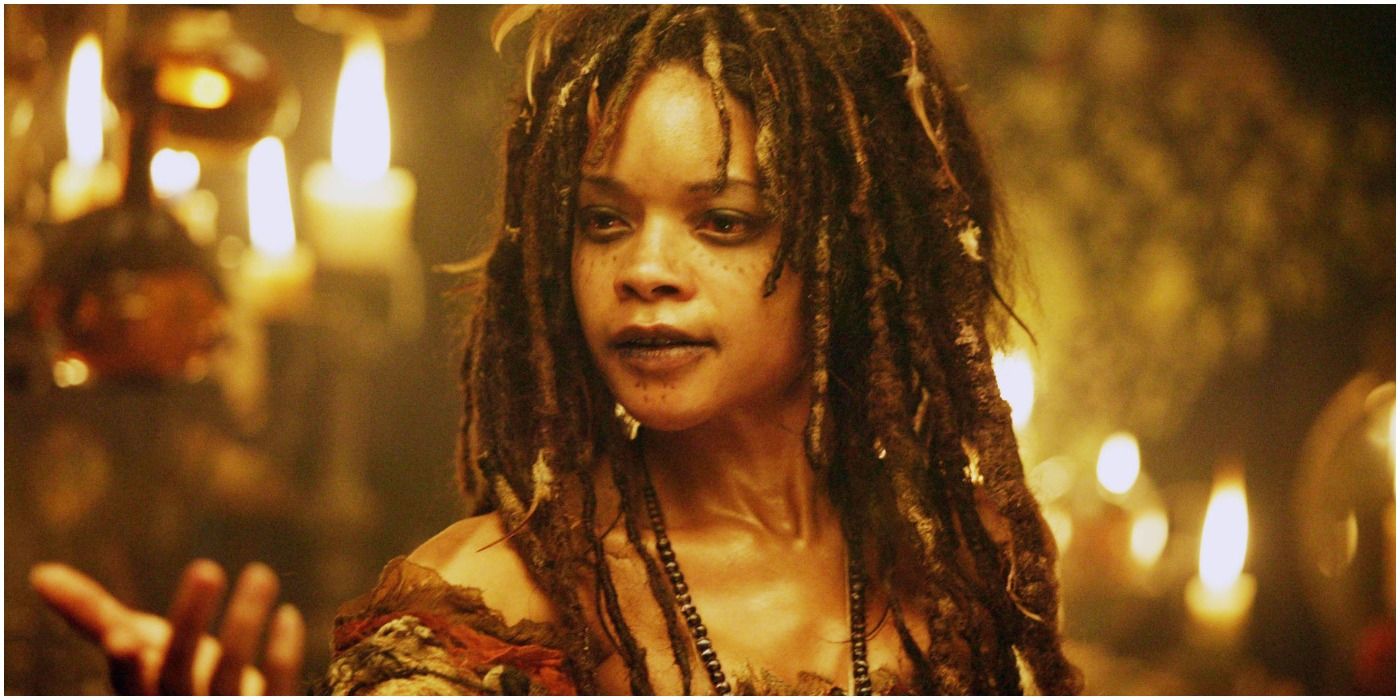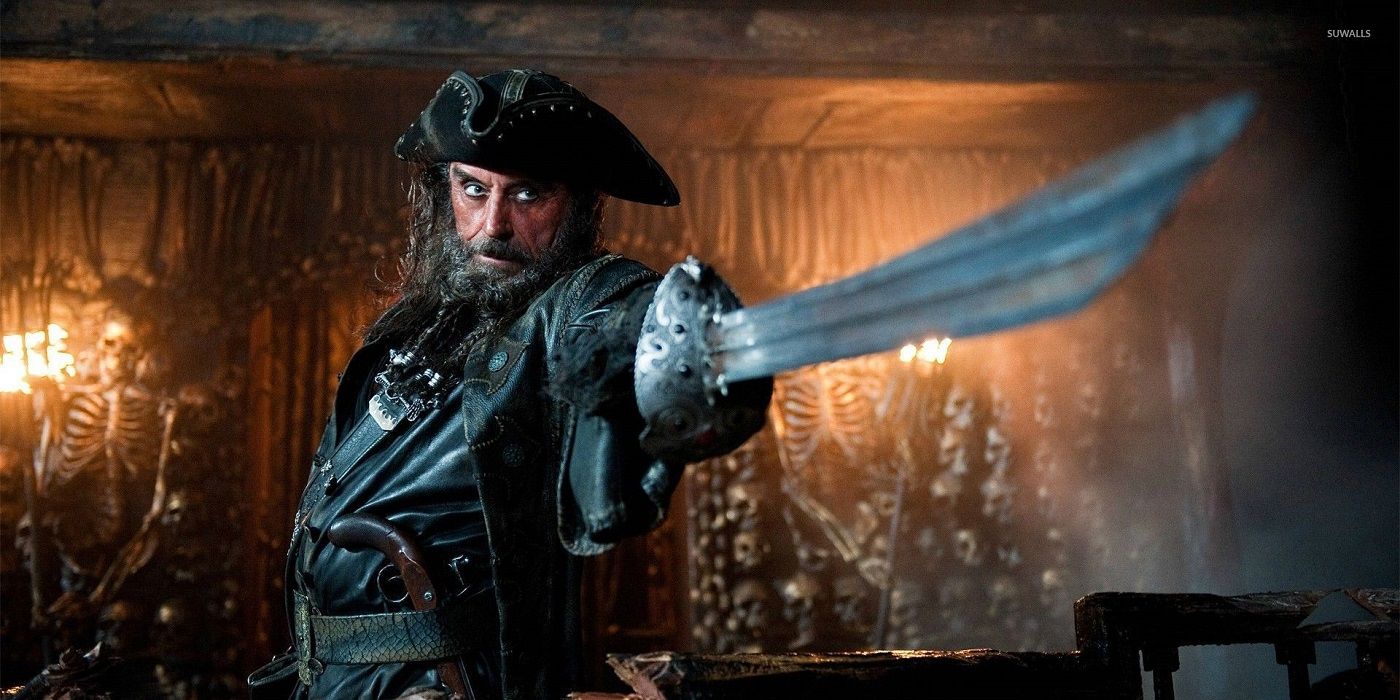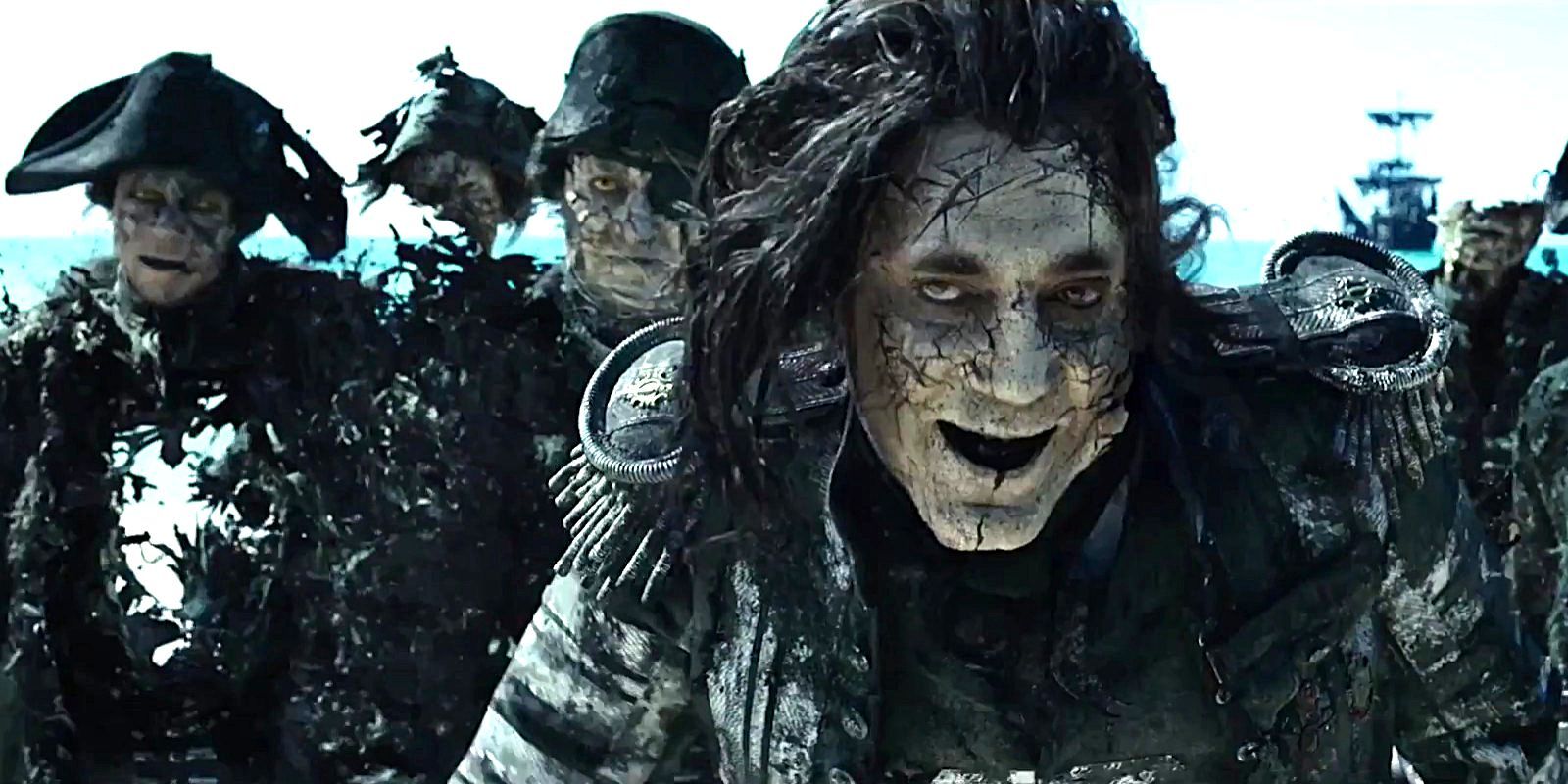Though based on the classic a Disneyland ride, the Pirates of the Caribbean movie franchise has also drawn from several nautical legends to build its own mythology. This practice of borrowing and altering common folklore is shared by a number of high-profile franchises across various mediums - such as Indiana Jones, Hellboy, and Harry Potter - and it’s not difficult to understand why. Such mythologies have an in-built fan-base and knowledge surrounding them, almost like a franchise property, but they don’t cost the production anything since they're in the public domain.
While the original Pirates of the Caribbean ride has been in operation since the late 1960s, Disney didn’t realize its cinematic potential until the early 2000s. The Curse of the Black Pearl released in 2003 to critical acclaim, making stars of its cast, and launching Jack Sparrow (Johnny Depp) to the top-tier of popular culture. Obviously, sequels followed: Dead Man’s Chest, At World’s End, On Stranger Tides, and Dead Men Tell No Tales. While the last few entries have still made money, the franchise has nonetheless declined as a result of negative reviews, complications surrounding Johnny Depp’s public image, and growing fatigue among the fan-base. Currently, two Pirates of the Caribbean reboots are said to be in the works at Disney - including one led by Margot Robbie - and, while fresh blood is no-doubt required to revive the franchise, they’d do well to continue borrowing from established folklore: a core element of the original series, and part of what made it so successful.
When discussing folklore, legend, and myth, it’s important to realize that their status is achieved over time. While some legends - such as mermaids and ghosts - are purely fictional (or so we’re told), real-world events can become legend if they hook people in some way - usually by presenting an unsolved mystery or long lost treasure, waiting to be solved or re-discovered. Such stories are easy to sensationalize and romanticize, therefore they’re more likely to linger in the public consciousness. The Pirates of the Caribbean franchise has utilized both types of legend (fictional and pseudo-historical) to establish its own derivative mythology, creating a world wherein King George II co-exists with Davy Jones, and the East India Trading Company is as much a threat as sailor-drowning mermaids.
The Curse of the Black Pearl: Aztec Gold, Skeletal Pirates, and Ghost Ships
Will Turner (Orlando Bloom) teams up with Captain Jack Sparrow to rescue his love-interest, Elizabeth Swann (Keira Knightley), from a crew of cursed, skeletal pirates. The titular curse stems from the treasure of Hernán Cortés - a real-world figure who is infamous for causing the fall of the Aztec Empire. He looted a lot of Aztec gold, but most of it was lost when he fled Mexico. The writers added the curse element, meaning that whoever removed the gold from its chest became damned - turning into an undead skeleton by moonlight. Skeleton pirates are a common trope, but they suit the Mexican/Aztec influenced plot - reminiscent of Day of the Dead celebrations.
The treasure is hidden on Isla de Muerta, a phantom island that can only be found by those in the know. While phantom islands are another common trope in pirate lore, the combination of this and the Aztec treasure is suggestive of El Dorado - the mythical city of gold. Curiously, Dreamworks’ The Road to El Dorado (2000) had used many of the same narrative links three years prior - associating Cortés with El Dorado (despite no real-world connection between the two) in a similarly swashbuckling adventure film.
Other locations in The Curse of the Black Pearl include Tortuga and Port Royal - both of which are real places that have been elevated to legendary status through repeated appearances in pirate lore. Tortuga is an island in Haiti that, like the movie shows, was a haven for pirates in the 17th century. Port Royal (in Jamaica) was once the largest Caribbean city, but is now known as the underwater city, all-but-destroyed by an earthquake in 1692, and kept down by a series of tsunamis and hurricanes, although this is an element of established lore that the franchise has yet to explore.
Regarding ships, the titular Black Pearl, though not based on a specific legend, is a classic ghost ship - with its ragged, black sails, and doom-laden fog. It brings to mind the Black Freighter - a ghostly ship that fires on a city - from the lyrics of “Pirate Jenny” (Brecht’s The Threepenny Opera). Like Elizabeth Swann, Jenny fantasizes about being a pirate, and - in the song - ends up joining the crew.
Dead Man’s Chest: Davy Jones, the Dutchman, and the Kraken
Jack Sparrow owes Davy Jones (Bill Nighy) a debt, and must recover Jones’s literal heart lest he face the dreaded ‘locker’. Davy Jones originates from the phrase “Davy Jones’ locker”: the bottom of the sea, essentially, and a metaphor for drowning and shipwrecks. He is often depicted as a demonic entity, but the filmmakers decided to lean on Lovecraft’s Cthulhu Mythos and give him an octopus beard. They also combined his legend with that of the Flying Dutchman - a famous ghost ship whose crew was said to be in league with the Devil - and the beastly Kraken, a sea-monster from Scandinavian folklore.
In Pirates of the Caribbean: Dead Man's Chest, Jones is tasked with ferrying the souls of the dead to the afterlife (not unlike Charon, the ferryman from Greek myth) but abandons his duties and becomes increasingly monstrous - turning into a human/sea creature hybrid, along with the rest of the Flying Dutchman’s crew. In the world of Pirates of the Caribbean, the ‘locker’ is a sort of purgatory - an endless expanse of white sand, not glimpsed until At World’s End.
Dead Man’s Chest also features both voodoo and cannibalism. Cannibal tribes are a popular piratical trope, but also exist in the real world - with native tribes consuming human flesh as recently as 2012. The ‘black spot’ is utilised, seemingly a classic element of nautical legend, but it actually originated in Robert Louis Stevenson’s Treasure Island - written long after the golden age of piracy. If a pirate is given the black spot, usually scribbled on a Bible page, they are guilty in the eyes of the giver. In Dead Man’s Chest, Jack is given the black spot but, unlike Stevenson’s novel, it appears as a festering scar on the palm of his hand, and acts as a homing-beacon for Jones’ pet, the Kraken. It is thought that Stevenson’s ‘black spot’ was inspired by traitorous pirates being given an Ace of Spades to signify that their disloyalty was known. Because an Ace features only one symbol, such pirates were said to be put “on the spot”.
At World’s End: Calypso and the Brethren Court
Turner, Swann, and Captain Barbossa (Geoffrey Rush) have to rescue Jack from Davy Jones’ locker, navigate alliances with the Pirate Lords, and revive the goddess Calypso (Naomie Harris) to stop the East India Trading Company from taking control of the seas. The Pirate Lords and the Pirate Code are featured heavily in this film, both stemming from real-world events. The Pirate Lords are members of the Brethren Court, a coalition of pirates inspired by the real-life Brethren of the Coast - a similar outfit based in both Tortuga and Port Royal. Various pirate codes have existed throughout the years, but usually applied to the running of individual ships rather than piratical-practice in general.
Calypso is one of the biggest mythic additions to the Pirates of the Caribbean franchise, though the writers played fast and loose with her origin. In Greek myth, Calypso is a nymph - a kind of minor god, usually tied to a specific region. In the film, Calypso is a sea goddess - decidedly more powerful than a nymph - but trapped in human form (the voodoo mystic, Tia Dalma) until she is set free by the Brethren Court. Calypso and Jones are former lovers in the films, Calypso having given Jones the task of ferrying souls, on the condition that he can meet her on land once every ten years. He stays true to his word but, after ten years pass, she fails to meet him - triggering a rage that results in her imprisonment. This is almost the opposite of Calypso’s narrative in Homer’s Odyssey wherein she lures the hero Odysseus to her island and refuses to be parted from him until she is ordered to let him go by the godlier gods.
On Stranger Tides: The Fountain of Youth, Blackbeard, and Mermaids
Sparrow and Barbossa are on a quest to find the fabled Fountain of Youth, but quickly discover that they’re not alone in their endeavours, as they're being tailed by Blackbeard (Ian McShane). Blackbeard is a genuine historical figure, but became a legend after his death. Folktales dictate that, once beheaded and thrown overboard, Blackbeard’s body swam several laps before disappearing beneath the foam. He was also said to braid candle wicks into his beard, and light them ablaze before battle to instil fear in his enemies - because nothing says terror like the smell of burnt hair. Curiously, the Pirates of the Caribbean franchise side-steps these stories - opting to make Blackbeard a voodoo practitioner rather than a headless-horseman type, and borrowing key elements from Tim Powers’ influential pirate novel, also titled On Stranger Tides. Like in real life, Blackbeard is the captain of the Queen Anne’s Revenge, but (in the film) his crew is made up of zombie pirates - adding to the franchise’s raft of undead villains.
The Fountain of Youth is a mythical pool said to restore anyone who drinks or bathes in its waters to their physical prime. Various real-life expeditions have been mounted to try and find it, the most famous of which was said to be led by conquistador Juan Ponce de León - though historians doubt the validity of these stories. Ponce de León features in On Stranger Tides, albeit as a skeleton, his ship tilting perilously over the edge of a cliff. In folklore, no rituals are required to bear the Fountain’s fruits, but in the film they added a fetch-quest to pad out the plot, wherein various items had to be gathered and a ceremony performed. These items included the Chalices of Cartagena, with similar properties to the Holy Grail from Indiana Jones and the Last Crusade, and a mermaid’s tear. The mermaids depicted are fairly accurate to folklore, beautiful above water and monstrous beneath the depths, luring sailors to their deaths - just like the Sirens from Homer’s Odyssey.
Dead Men Tell No Tales: The Trident of Poseidon, Ghosts, and the Devil's Triangle
Jack Sparrow is hunted down by his old foe, Captain Salazar (Javier Bardem) - a ghost, set free from the Devil’s Triangle and intent on ending piracy for good. Only the Trident of Poseidon can guarantee Jack mastery of the seas and assure his survival. Salazar and his crew mark yet another variation on the undead pirate trope - the traditional ghost - and their Devil’s Triangle origin is typical of the genre. The Devil’s Triangle, better known today as the Bermuda Triangle, is an area of the North Atlantic Ocean that has come to be associated with various shipwrecks and disappearances. This crossed-over into aviation lore with the advent of commercial air travel, and the Triangle has since become a supposed hot-spot for extraterrestrial activity.
The Trident of Poseidon is the central MacGuffin of Pirates of the Caribbean: Dead Men Tell No Tales, said to give whoever wields it control over the sea and its many creatures. In Greek myth, the Trident belonged to Poseidon - one of the twelve major gods - and was said to have been forged by the Cyclopes. In the film, it has the ability to part the seas, just like Moses, and is said to contain the power of every nautical curse inflicted on characters throughout the Pirates of the Caribbean series. When the Trident is destroyed at the end of the movie, the curses are lifted - offering closure for the themes established all the way back in The Curse of the Black Pearl.
Pirates of the Caribbean 6: Why Disney Is Rebooting The Franchise

